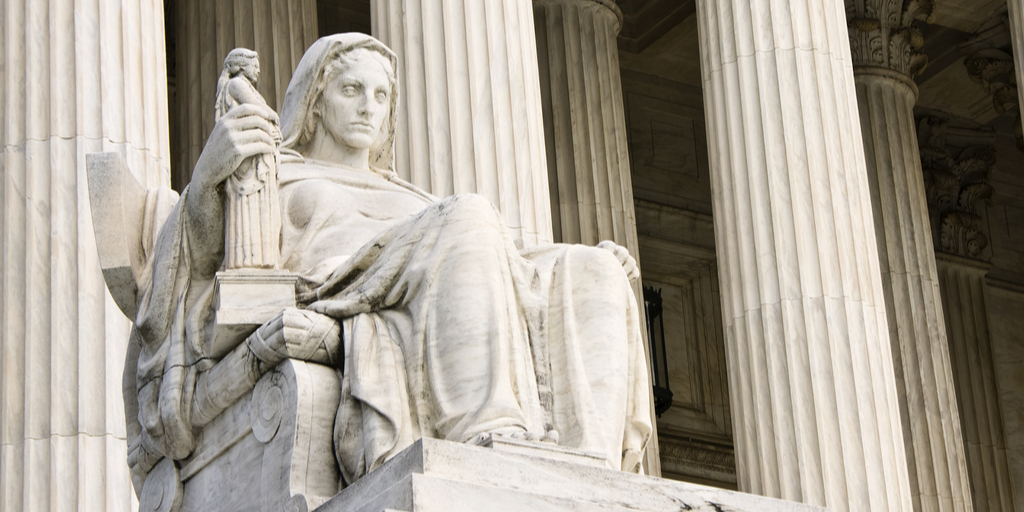There is no precedent for a measure like DACA, concretely debated and rejected by Congress, to have been, nonetheless, put into effect by the president.
Stare Decisis in an Originalist Theory of Law
There is much to admire in Marc DeGirolami’s excellent and thought-provoking essay on bridging the gap between originalism and stare decisis. I’m not sure I disagree with his analysis. But, I think, that analysis would benefit from three refinements or clarifications, with which we can better understand why the Founding generation expected judges to be both originalist and bound by precedent.
First, we ought to be clear that there are at least two different kinds of precedent. There are those precedents that resolve a question within the range of permissible textual interpretations. That was the kind of precedent to which Justice Clarence Thomas was referring in his opinion in Gamble; to which Alexander Hamilton was likely referring in his discussion in Federalist 78; and which originalists argue is consistent with Article III of the Constitution. One can be an originalist but also accept that the original meaning is sometimes open to competing plausible interpretations. What is a judge—or legislator, or executive—to do? When the question is first decided, it will not be decided on the basis of “precedent,” but rather on what these first deciders think is the best answer. Subsequent decisionmakers can then rely on that initial decision or disagree with it. At some point in time, however, future decisionmakers will consider the answer to the question “liquidated” or “settled” if enough earlier decisionmakers landed on a similar answer. This seems to have been James Madison’s view when he refused to veto the Second Bank of the United States, even though he had initially opposed the first bank on constitutional grounds.
This version of precedent explains why the Founders could be originalist while also accepting precedent. And make no mistake about it: The Founders were originalists. Here is John Marshall in Gibbons v. Ogden: “As men whose intentions require no concealment generally employ the words which most directly and aptly express the ideas they intend to convey, the enlightened patriots who framed our Constitution, and the people who adopted it, must be understood to have employed words in their natural sense . . . .” And here is James Madison in an 1824 letter to Henry Lee: “What a metamorphosis would be produced in the code of law if all its ancient phraseology were to be taken in its modern sense.” In David Currie’s magisterial study of the Constitution in Congress in the early decades of the Republic, he concluded that essentially every member of Congress was an originalist, and“[t]he question was not whether to follow the Framers’ intentions, but what those intentions were.”
If the view of the Chief Justice in June Medical, or the Court in City of Boerne, is correct, then that means Abraham Lincoln was wrong to insist that Dred Scott v. Sandford had not settled for the country as a political rule the question whether free blacks were citizens of the United States.
So whence comes the need to bridge the gap between originalism and stare decisis in modern-day cases? The question arises only because at some point in time, the Supreme Court abandoned originalism, and prior originalist precedents, and came up with new law altogether. When precisely this happened is beside the point; it surely happened at different times for different doctrines. The point is, once the Supreme Court decided to change the law, the Supreme Court began to reaffirm its changes. These new legal decisions were now “precedents,” but they were unlike the older precedents in that they were outside the bounds of permissible textual interpretation.
Is this kind of new “precedent” the kind worth adhering to? Professor DeGirolami argues that stare decisis is important because of the values of legal endurance:
Stare decisis fosters the law’s endurance, and consequently its durability, because it supports legal continuity as a common, human project over a particular judge’s unconstrained sense, in a single time and place, of the correct outcome. The law as the “artificial perfection of reason” is a common project achieved by generations of judges and lawyers over the span of centuries. . . .
Where the Court confronts precedents of great age, endurance, continuity, and connection to similarly ancient and longstanding common, popular practices, the virtues of legal stability fostered by stare decisis are especially potent or antiquity as such.
Here I would make a second refinement, however, or at least a change in emphasis. What makes the artificial reason of the law worth following is that it is more likely than an individual judge’s perception to reflect the correct answer, whether to the textual question, to the question of the correct custom, or of the correct policy. And if that is why we care about the artificial reason of the law and about antiquity and endurance, then it is not at all clear why any demonstrably erroneous, nonoriginalist precedents should be adhered to even if they’re decades old.
That is especially true when we consider that Professor DeGirolami’s conception of stare decisis is inconsistent with judicial supremacy, which I offer as my third point of elaboration. To get the kinds of longstanding and antiquated precedents that reflect the true “artificial reason” of the law requires more than a single Supreme Court decision. Yet more and more it is these single decisions that are at stake in the debates over precedent. It is what makes Chief Justice Roberts’ concurrence in June Medical so insidious. It is what makes the Supreme Court’s refusal, in City of Boerne v. Flores, to reconsider its earlier 5–4 decision in Employment Division v. Smith equally destructive. A nearly unanimous Congress and President signed a law inconsistent with Smith and effectively asked the Supreme Court to reconsider its prior decision, but the Supreme Court refused to do so. Its earlier decision was the law of the land, and that was that. If the view of the Chief Justice in June Medical, or the Court in City of Boerne, is correct, then that means Abraham Lincoln was wrong to insist that Dred Scott v. Sandford had not settled for the country as a political rule the question whether free blacks were citizens of the United States.
To summarize, any theory of precedent must recognize, as does Professor DeGirolami’s, that stare decisis is valuable “because it supports legal continuity as a common, human project over a particular judge’s unconstrained sense, in a single time and place, of the correct outcome.” But this requires a chain of decisions over time, and not a single Supreme Court decision; recognition that ultimately these decisions over time matter only because the numerous individuals at different times and places that have agreed are more likely to have agreed on the correct answer; and that the correct answer must be within the range of possible original meanings. Only by understanding these points can we see how it was possible for the Founders themselves to think that judges would be both originalist and bound by precedent.


